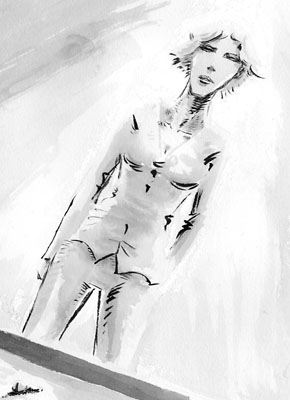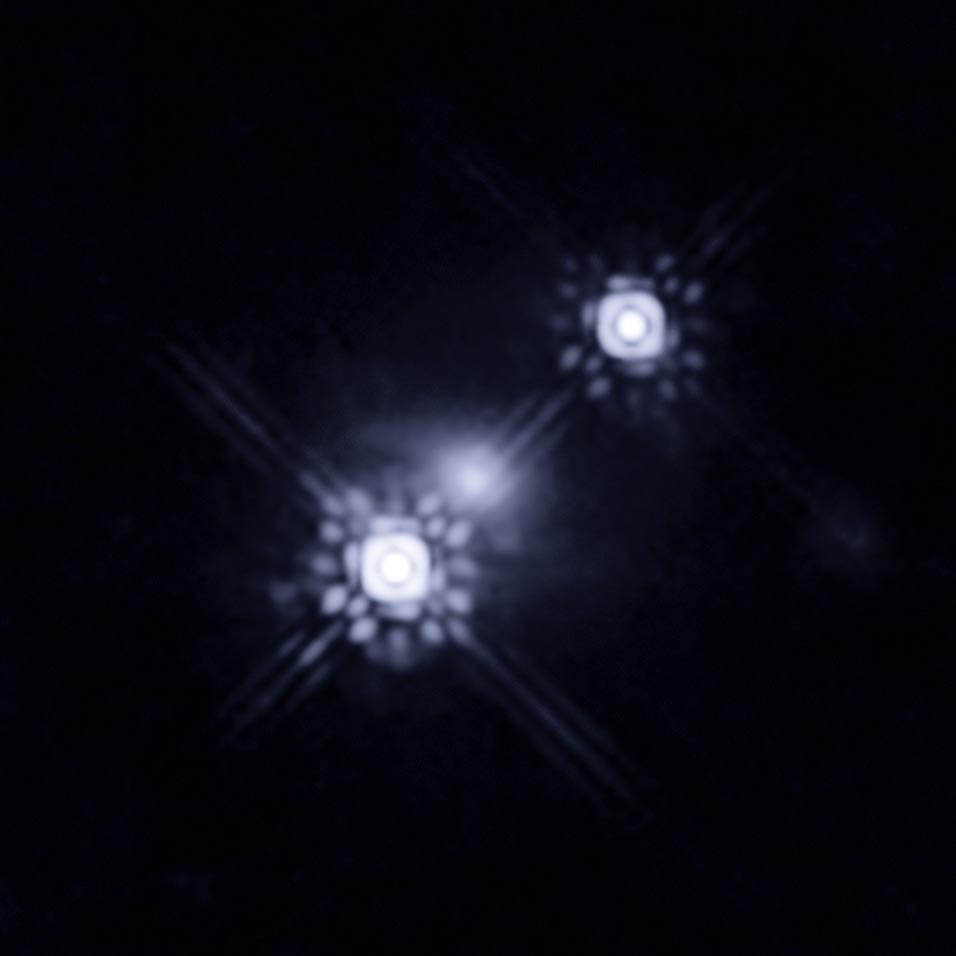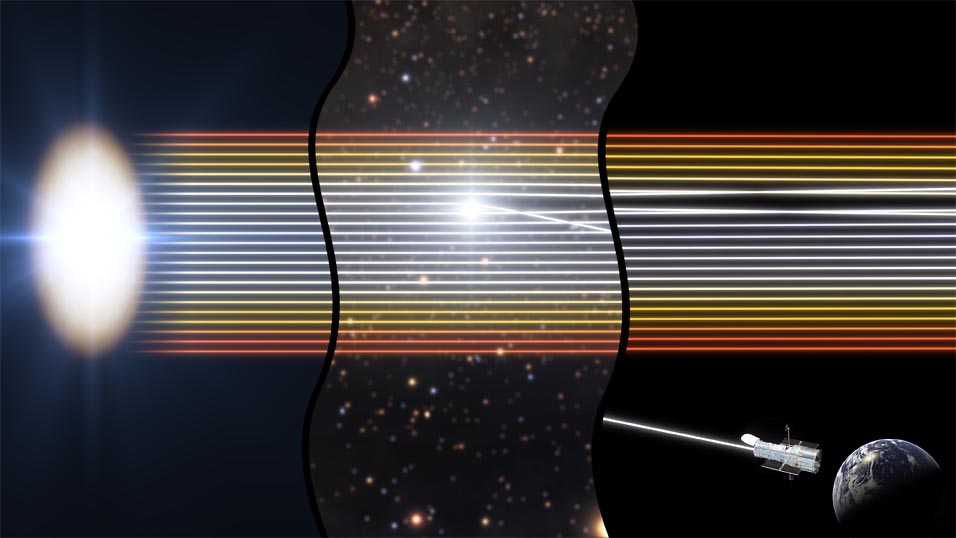 | |
|  |
|
|
| |
| Lensing a black hole, & two curvilinear heads | Nov 23, 2011 7:12 AM PST | url |
| | |
Added 1 new A* page:^ This page was another instance where I had the whole thing done, scanned, ready to post...and only then realized the head was placed wrong, and had to repaint it. And like the last time, the head came out way better the second time around anyway. So I should probably just redo my heads every time and the comic would be that much better! (And that much more delayed, yargh.)
This time around was different though in that, thanks to the darker pencil I'm working with now, I could tell as I was sketching the layout that the head wasn't *quite* right; but I made that critical art error: I was so fond of the way I'd drawn that part that I didn't want to erase it and redo it, and so fooled myself into leaving it by saying 'oh, it's pretty close, it'll work out.' I should know by now that something that just slightly irritates me in the early going will keep me from sleeping in the final version. ;P So I gotta be more ruthless with my eraser, and no matter how charming a piece of the drawing may be by itself, if it doesn't fit with the rest of the scene, it's gotta be obliterated immediately. No mercy!
Here's the original version of the head:

Just a bit too big--especially since this is a sort of tricky double perspective: it's an side-angled view of a flat screen, plus that screen is tilted away from us. Why I decide to try these things, I dunno. :P (And like a dummy I refuse to graph out my perspective, since well that's boring, and anyway one/two/three point perspective isn't really how our eyes see perspective anyway (see: curvilinear perspective)--so I prefer a less precise but more naturalistic eyeballed approach; although, I *did* use a ruler for the first time for drawing A* in this page! Look at me I'm a big boy now--actually I shouldn't have done it, on the same principles as why I don't graph perspective, but eh I was having a hard time getting the screen to feel straight, especially cutting behind the arm in the foreground.) I suppose the head was probably a bit too cartoony, too. And I did so love the delicate ink wash on it, sigh; the replacement head is straight black and white because the white ink used to cover up the old head is not waterproof, so you can't do any ink wash over it.
~~~~~~
An interesting article appeared on the ESA's Hubble site lately: Hubble Directly Observes the Disc Around a Black Hole. Because the target galaxy--or quasar, specifically--HE 1104-1805, is behind another one, [WKK93] G, the one in front bends light coming from the more distant one around it; so for instance in this Hubble view, the farther galaxy appears twice, since the foreground galaxy (the sorta blurry crescent in the middle) bends the light from the more distant one toward us along multiple trajectories:

image by NASA, ESA and J.A. Muñoz (University of Valencia) (source)
That's neat, but how the researchers were able to use the lensing galaxy as a sort of telescope was really tricky: as stars in the foreground galaxy passed in front of the light from the distant quasar, they bent individual beams of light from the quasar's central disc into Hubble's lens; by reading these individual beams, the team could define the size of the distant quasar's disc--the superheated material spiraling into the supermassive black hole at the center of the quasar--much more precisely than they could have from the blurrier, less precise view normally afforded of the quasar; they could read the color, and thus the temperature, and thus original nearness to the center of the supermassive black hole of each beam of light--the light is bluer/hotter near the center (until it crosses the event horizon of course, but an object that size would be impossible to see at this distance anyway, probably)--and ultimately determined that the central disc "is between four and eleven light-days across."
That's vague, but still way better than they could have done otherwise. The article doesn't say exactly (or even approximately) how far away HE 1104-1805 is thought to be, but there are mentions of scales in "billions of light years" so maybe it's something in that range, which is pretty far. Some of the data on this page might help the scientifically inclined make a more precise determination, but all those galactic coordinate systems and such are a bit beyond me!
Oh yeah, here's a diagram showing the "magnifying glass" effect I was trying to describe above, where precise beams of light from the quasar are deflected into Hubble's telescope lens by stars in the foreground galaxy:

image by NASA & ESA (source)
|
·····
|
|
|
